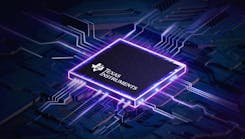Electronic isolation is a means of preventing the transfer of direct current (dc) and unwanted alternating current (ac) between two parts of a system while still enabling signal and power transfer between those two parts. This kind of isolation is required in a number of instances, such as:
- Protecting industrial operators from high voltage.
- Protecting expensive processors and related circuits from high voltage.
- Preventing ground loops in communications networks.
- Improving noise immunity.
- Communicating with high-side devices in a motor drive or power-converter systems.
Industrial equipment that requires isolation includes programmable logic controllers (PLCs), motor drives, medical equipment, solar inverters, electrical vehicles (EVs), and some special power supplies.
There’s a need for an efficient, affordable, and compact isolation solution for industrial equipment. A fully integrated signal and power isolation product that’s now available brings a number of benefits to system design, including reduced board space, ease of certification, and simpler design. This article introduces isolation methods and a modern integrated approach.








